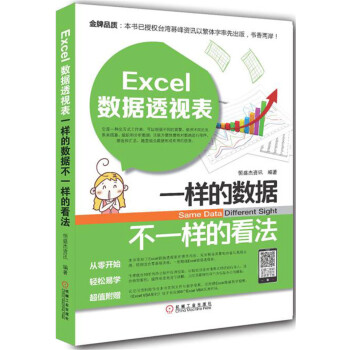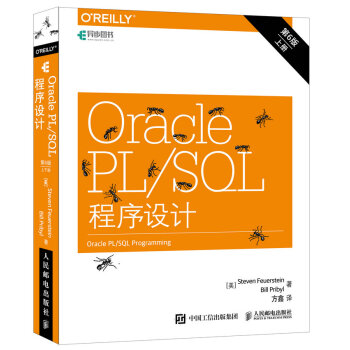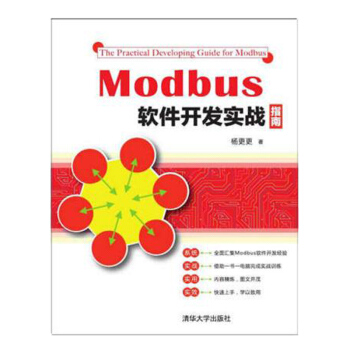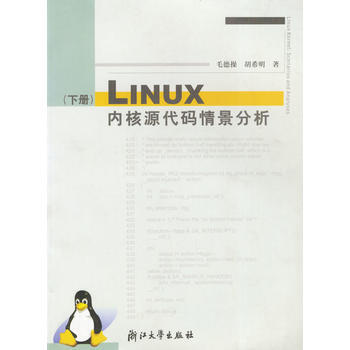![Hadoop应用架构(影印版 英文版) [Hadoop Application Architectures]](https://pic.tinynews.org/12151372/58d4b4ccN5ff94d68.jpg)

具体描述
内容简介
在使用Apache Hadoop设计端到端数据管理解决方案时获得专家级指导。当其他很多渠道还停留在解释Hadoop生态系统中该如何使用各种纷繁复杂的组件时,这本专注实践的书已带领你从架构的整体角度思考,它对于你的特别应用场景而言是必不可少的,将所有组件紧密结合在一起,形成完整有针对性的应用程序。为了增强学习效果,《Hadoop应用架构(影印版 英文版)》第二部分提供了各种详细的架构案例.涵盖部分常见的Hadoop应用场景。
无论你是在设计一个新的Hadoop应用还是正计划将Hadoop整合到现有的数据基础架构中,《Hadoop应用架构(影印版 英文版)》都将在这整个过程中提供技巧性的指导。
使用Hadoop存放数据和建模数据时需要考虑的要素 在系统中导入数据和从系统中导出数据的实践指导 数据处理的框架,包括MapReduce、Spark和Hive 常用Hadoop处理模式,例如移除重复记录和使用窗口分析 Giraph,GraphX以及其他Hadoop上的大图片处理工具 使用工作流协作和调度工具,例如Apache Oozie 使用Apache Storm、Apache Spark Streaming和Apache Flume处理准实时数据流 点击流分析、欺诈防止和数据仓库的架构实例
目录
ForewordPreface
Part Ⅰ. Architectural Considerations for Hadoop Applications
1. Data Modeling in Hadoop
Data Storage Options
Standard File Formats
Hadoop File Types
Serialization Formats
Columnar Formats
Compression
HDFS Schema Design
Location of HDFS Files
Advanced HDFS Schema Design
HDFS Schema Design Summary
HBase Schema Design
Row Key
Timestamp
Hops
Tables and Regions
Using Columns
Using Column Families
Time-to-Live
Managing Metadata
What Is Metadata?
Why Care About Metadata?
Where to Store Metadata?
Examples of Managing Metadata
Limitations of the Hive Metastore and HCatalog
Other Ways of Storing Metadata
Conclusion
2. Data Movement
Data Ingestion Considerations
Timeliness of Data Ingestion
Incremental Updates
Access Patterns
Original Source System and Data Structure
Transformations
Network Bottlenecks
Network Security
Push or Pull
Failure Handling
Level of Complexity
Data Ingestion Options
File Transfers
Considerations for File Transfers versus Other Ingest Methods
Sqoop: Batch Transfer Between Hadoop and Relational Databases
Flume: Event-Based Data Collection and Processing
Kafka
Data Extraction
Conclusion
3. Processing Data in Hadoop
MapReduce
MapReduce Overview
Example for MapReduce
When to Use MapReduce
Spark
Spark Overview
Overview of Spark Components
Basic Spark Concepts
Benefits of Using Spark
Spark Example
When to Use Spark
Abstractions
Pig
Pig Example
When to Use Pig
Crunch
Crunch Example
When to Use Crunch
Cascading
Cascading Example
When to Use Cascading
Hive
Hive Overview
Example of Hive Code
When to Use Hive
Impala
Impala Overview
Speed-Oriented Design
Impala Example
When to Use Impala
Conclusion
4. Common Hadoop Processing Patterns
Pattern: Removing Duplicate Records by Primary Key
Data Generation for Deduplication Example
Code Example: Spark Deduplication in Scala
Code Example: Deduplication in SQL
Pattern: Windowing Analysis
Data Generation for Windowing Analysis Example
Code Example: Peaks and Valleys in Spark
Code Example: Peaks and Valleys in SQL
Pattern: Time Series Modifications
Use HBase and Versioning
Use HBase with a RowKey of RecordKey and StartTime
Use HDFS and Rewrite the Whole Table
Use Partitions on HDFS for Current and Historical Records
Data Generation for Time Series Example
Code Example: Time Series in Spark
Code Example: Time Series in SQL
Conclusion
5. Graph Processing on Hadoop
What Is a Graph?
What Is Graph Processing?
How Do You Process a Graph in a Distributed System?
The Bulk Synchronous Parallel Model
BSP by Example
Giraph
Read and Partition the Data
Batch Process the Graph with BSP
Write the Graph Back to Disk
Putting It All Together
When Should You Use Giraph?
GraphX
Just Another RDD
GraphX Pregel Interface
vprog0
sendMessage0
mergeMessage0
Which Tool to Use?
Conclusion
6. Orchestration
Why We Need Workflow Orchestration
The Limits of Scripting
The Enterprise Job Scheduler and Hadoop
Orchestration Frameworks in the Hadoop Ecosystem
Oozie Terminology
Oozie Overview
Oozie Workflow
Workflow Patterns
Point-to-Point Workflow
Fan- Out Workflow
Capture-and-Decide Workflow
Parameterizing Workflows
Classpath Definition
Scheduling Patterns
Frequency Scheduling
Time and Data Triggers
Executing Workflows
Conclusion
7. Near-Real-Time Processing with Hadoop
Stream Processing
Apache Storm
Storm High-Level Architecture
Storm Topologies
Tuples and Streams
Spouts and Bolts
Stream Groupings
Reliability of Storm Applications
Exactly-Once Processing
Fault Tolerance
Integrating Storm with HDFS
Integrating Storm with HBase
Storm Example: Simple Moving Average
Evaluating Storm
Trident
Trident Example: Simple Moving Average
Evaluating Trident
Spark Streaming
Overview of Spark Streaming
Spark Streaming Example: Simple Count
Spark Streaming Example: Multiple Inputs
Spark Streaming Example: Maintaining State
Spark Streaming Example: Windowing
Spark Streaming Example: Streaming versus ETL Code
Evaluating Spark Streaming
Flume Interceptors
Which Tool to Use?
Low-Latency Enrichment, Validation, Alerting, and Ingestion
NRT Counting, Rolling Averages, and Iterative Processing
Complex Data Pipelines
Conclusion
Part Ⅱ. Case Studies
8. Clickstream Analysis
Defining the Use Case
Using Hadoop for Clickstream Analysis
Design Overview
Storage
Ingestion
The Client Tier
The Collector Tier
Processing
Data Deduplication
Sessionization
Analyzing
Orchestration
Conclusion
9. Fraud Detection
Continuous Improvement
Taking Action
Architectural Requirements of Fraud Detection Systems
Introducing Our Use Case
High-Level Design
Client Architecture
Profile Storage and Retrieval
Caching
HBase Data Definition
Delivering Transaction Status: Approved or Denied?
Ingest
Path Between the Client and Flume
Near-Real-Time and Exploratory Analytics
Near-Real-Time Processing
Exploratory Analytics
What About Other Architectures?
Flume Interceptors
Kafka to Storm or Spark Streaming
External Business Rules Engine
Conclusion
10. Data Warehouse
Using Hadoop for Data Warehousing
Defining the Use Case
OLTP Schema
Data Warehouse: Introduction and Terminology
Data Warehousing with Hadoop
High-Level Design
Data Modeling and Storage
Ingestion
Data Processing and Access
Aggregations
Data Export
Orchestration
Conclusion
A. Joins in Impala
Index
精彩书摘
《Hadoop应用架构(影印版 英文版)》:Includes everything required for Hadoop applications to run,except data,Thisincludes JAR files,Oozie workflow definitions,Hive HQL files,and more.Theapplication code directory/app is used for application artifacts such as JARs forOozie actions or Hive user—defined functions(UDFs).It is not always necessaryto store such application artifacts in HDFS.but some Hadoop applications suchas Oozie and Hive require storing shared code and configuration on HDFS so itcan be used by code executing on any node of the cluster.This directory shouldhave a subdirectory for each group and application,similar to the structure usedin/etl.For a given application(say,Oozie),you would need a directory for eachversion of the artifacts you decide to store in HDFS,possibly tagging,via a symlink in HDFS,the latest artifact as latest and the currently used one as current.The directories containing the binary artifacts would be present under these versioned directories.This will look similar to:/appkgroup>kapplication>/< ver_sion >/< artrfact directory >/< artifact >.To continue our previous example,the JARfor the latest build of our aggregate preferences process would be in a directorystructure like/app/BI/clickstream/latest/aggregate—preferences/uber—aggregate—preferences.jar.
……
用户评价
阅读《Hadoop应用架构(影印版 英文版) [Hadoop Application Architectures]》的初衷,源于我对构建大规模数据处理系统的浓厚兴趣。我一直在思考,当我们面对TB甚至PB级别的数据时,传统的单体式数据库和应用架构将不堪重负,而Hadoop作为一个分布式系统,又是如何克服这些挑战的呢?我希望这本书能够系统地介绍Hadoop的整体设计理念,包括其分布式存储、分布式计算以及资源管理等核心概念。我期待书中能够详细讲解HDFS的设计原理,例如副本机制如何保证数据的高可用性,以及数据块(block)的大小选择对性能有何影响。同时,对于MapReduce编程模型,我希望能够深入理解其Map和Reduce阶段的设计思路,以及如何通过优化Shuffle过程来提升计算效率。YARN作为Hadoop 2.x引入的资源管理器,其在多租户、资源隔离和任务调度方面的能力,也是我关注的重点。我希望书中能够阐述YARN如何有效地管理集群资源,并支持MapReduce、Spark、Hive等多种计算框架的统一调度。总而言之,我希望这本书能为我打开一扇通往Hadoop世界的大门,让我能够更清晰地认识这个强大的数据处理引擎。
评分在我接触到《Hadoop应用架构(影印版 英文版) [Hadoop Application Architectures]》这本书之前,我对Hadoop的理解主要停留在一些零散的知识点和概念层面。我隐约知道它是一个分布式系统,能够处理海量数据,但对于其内部的精妙设计和不同组件之间的联动关系,一直缺乏一个清晰、全面的认识。我希望这本书能够填补我在这方面的知识空白。特别是关于Hadoop生态系统中其他重要组件,如Zookeeper(用于分布式协调)、HBase(分布式列存储)、Kafka(分布式流平台)等,是如何与Hadoop核心组件集成,共同构建起一个功能更加丰富的数据处理和分析平台,这一点我非常好奇。书中能否对这些组件的架构特点、适用场景以及它们在整个Hadoop应用架构中的作用进行深入剖析?我尤其希望能够看到一些关于如何将Hadoop与这些新兴技术结合的实际案例,比如如何利用Kafka实现实时数据摄入,然后通过Hadoop进行离线批处理,或者如何利用HBase为需要快速随机访问的海量数据提供支持。
评分对于《Hadoop应用架构(影印版 英文版) [Hadoop Application Architectures]》的期望,更多地体现在其“应用架构”这四个字上。我不仅仅想了解Hadoop各个组件的技术细节,更希望知道如何在实际的生产环境中,将这些组件有效地组织起来,构建出满足特定业务需求的健壮、可扩展的应用。例如,在企业级数据湖的建设中,Hadoop扮演着怎样的角色?数据如何从各个源头汇聚到Hadoop集群,又如何在HDFS中进行有效的组织和管理?当数据分析师或数据科学家需要访问这些数据时,他们会通过哪些工具和接口?Hive、Impala、Spark SQL等数据查询引擎,在Hadoop生态中扮演着怎样的角色,它们之间又存在怎样的权衡取舍?我希望这本书能够提供一些指导性的框架和模式,帮助我理解如何根据数据量、数据类型、访问频率、延迟要求等因素,设计出最优的Hadoop应用架构。此外,对于数据治理、安全、监控和运维方面的考量,我也是非常期待能够在这本书中找到相关的论述。毕竟,一个成功的Hadoop应用,不仅仅依赖于其强大的技术能力,更需要完善的管理和维护体系。
评分这本《Hadoop应用架构(影印版 英文版) [Hadoop Application Architectures]》的封面设计就颇具匠心,金属质感的深邃蓝色背景,搭配抽象但极具科技感的线条勾勒出的数据流,仿佛预示着书中对Hadoop宏大生态和复杂架构的深度探索。尽管我还没来得及仔细翻阅,单凭这外观,就能感受到它传递出的专业与前沿气息。我尤其期待书中对于Hadoop核心组件(如HDFS, MapReduce, YARN)如何协同工作,构建起稳定且可扩展的数据处理平台的详细解析。在如今数据量爆炸的时代,理解Hadoop的架构原理,无论是对于开发者还是架构师来说,都至关重要。我希望这本书能够深入浅出地阐述那些支撑起海量数据处理的底层逻辑,比如数据如何在HDFS中分布存储,任务如何在YARN上调度执行,以及MapReduce如何将复杂的计算分解并并行处理。此外,对于各种实际应用场景下Hadoop架构的优化策略和最佳实践,也是我非常感兴趣的部分。我希望书中能有丰富的案例研究,展示如何针对不同的业务需求,灵活运用Hadoop及其衍生技术,构建出高效、可靠的数据解决方案。例如,在实时数据分析、离线数据仓库构建、甚至是机器学习模型训练等场景下,Hadoop架构会呈现出怎样的差异和侧重点,这些都是我渴望在这本书中找到答案的。
评分这本书《Hadoop应用架构(影印版 英文版) [Hadoop Application Architectures]》对于我来说,更多的是一种对未来技术趋势的探索和准备。当前,大数据技术正以前所未有的速度发展,Hadoop作为其中的领军者,其架构的演进和创新也从未停止。我非常期待书中能够涵盖一些关于Hadoop及其周边技术(例如Spark)在架构设计上的最新进展和最佳实践。我想了解,在面对日益复杂的数据处理需求,如实时流处理、图计算、机器学习等,Hadoop的架构是如何演变的?Spark是如何在性能和易用性上超越传统MapReduce的?书中能否提供关于如何设计一个兼顾批处理和流处理能力的统一数据平台的思路?此外,随着云原生技术的兴起,Hadoop的部署和管理方式也在发生变化。我希望书中能够探讨Hadoop在容器化环境(如Docker, Kubernetes)下的部署和管理,以及如何在云平台上实现Hadoop的弹性伸缩和高效运维。总而言之,我希望这本书能够帮助我构建一个面向未来的、适应不断变化的大数据技术格局的Hadoop应用架构的认知体系。
评分不知道怎么样,别人买的。。。。。
评分第一次购买英文版本书
评分很好 很快 正版图书 值得信赖
评分这本书挺好的,京东快递很给力!
评分嗯,东西收到了,包装很好,书的质量也不错,好评。
评分还没拆,样子ok
评分英文水平不足,读起来真多挺痛苦的,加油吧
评分做大数据研究必备经典书目啊
评分收藏,好书值得,好好好好,
相关图书
本站所有内容均为互联网搜索引擎提供的公开搜索信息,本站不存储任何数据与内容,任何内容与数据均与本站无关,如有需要请联系相关搜索引擎包括但不限于百度,google,bing,sogou 等
© 2025 book.tinynews.org All Rights Reserved. 静思书屋 版权所有






![Python机器学习(影印版) [Python Machine Learning] pdf epub mobi 电子书 下载](https://pic.tinynews.org/12205192/5943a1beN72d89975.jpg)



![[按需印刷] 量子计算机研究(下册)纠错和容错计算 pdf epub mobi 电子书 下载](https://pic.tinynews.org/10241970896/5705ce01N3fd69d83.jpg)









